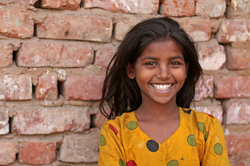THE MUSEUM SCHOOL

posted by NISHA KUMAR KULKARNI on May 5th 2011
An innovative education model in Bhopal shows one way to give poor urban children access to a quality education.
The Organization for Awareness of Integrated Social Security (OASiS) is a social innovations lab in India where people can experiment with ideas on social development and ultimately become social entrepreneurs. Since its inception in 2003, OASiS has developed five social innovations: a social security system, an insurance system for the disabled, a social credit system, a forest village integrated development model and an education model for the children of urban slums called the Museum School.
The Museum School was inspired by a group of children in tattered clothing at a bus stop in an upscale residential area of Bhopal. The children were watching their better-dressed peers get off a school bus. “The only similarity between those children and them were the bags on their backs. The difference, however, was in the content of the bags. While one had books and tiffin in it, the other one had dirty garbage collected from the backyards of houses,” writes OASiS President Pradeep Ghosh and Coordinator Shibani Ghosh in a report. It was the realization that education is prohibitively expensive for the urban poor that prompted OASiS to action.
To right this imbalance, OASiS set the goal of educating society’s forgotten children: the runaways, dropouts and those who had never set foot in a school. The first step was to identify a well-rounded education model. The next was to find the best possible learning environment without having to finance new facilities. The OASiS searches ultimately led to museums, brick-and-mortar troves of knowledge available as teaching aids and lessons.
On September 5th, 2005, OASiS launched the Museum School, or Parvarish, in collaboration with three museums in Bhopal. It started with 40 children from two slums. Today, the Museum School boasts a student body of about 150 children from five slums lead by a Shibani Ghosh, six literacy teachers and 20 volunteers. In 2010, OASiS reported 250 more children waiting to be included in their Museum School project.
The Museum School can be replicated in any city with a museum and where there exists a population of non-school going children. The average cost per child in a group of 100 children is approximately INR 5,000 (~US$111) in a so-called ‘B’ city. In an ‘A’ city, the per-child cost will likely increase due to the higher costs of community volunteers and transportation. How OASiS will inspire duplication of the Museum School across India, as well as tackle any increased costs, is its next big challenge.
OASiS was an enterprise nominee at the Sankalp 2010 Awards, hosted by Beyond Profit’spublisher, Intellecap.
